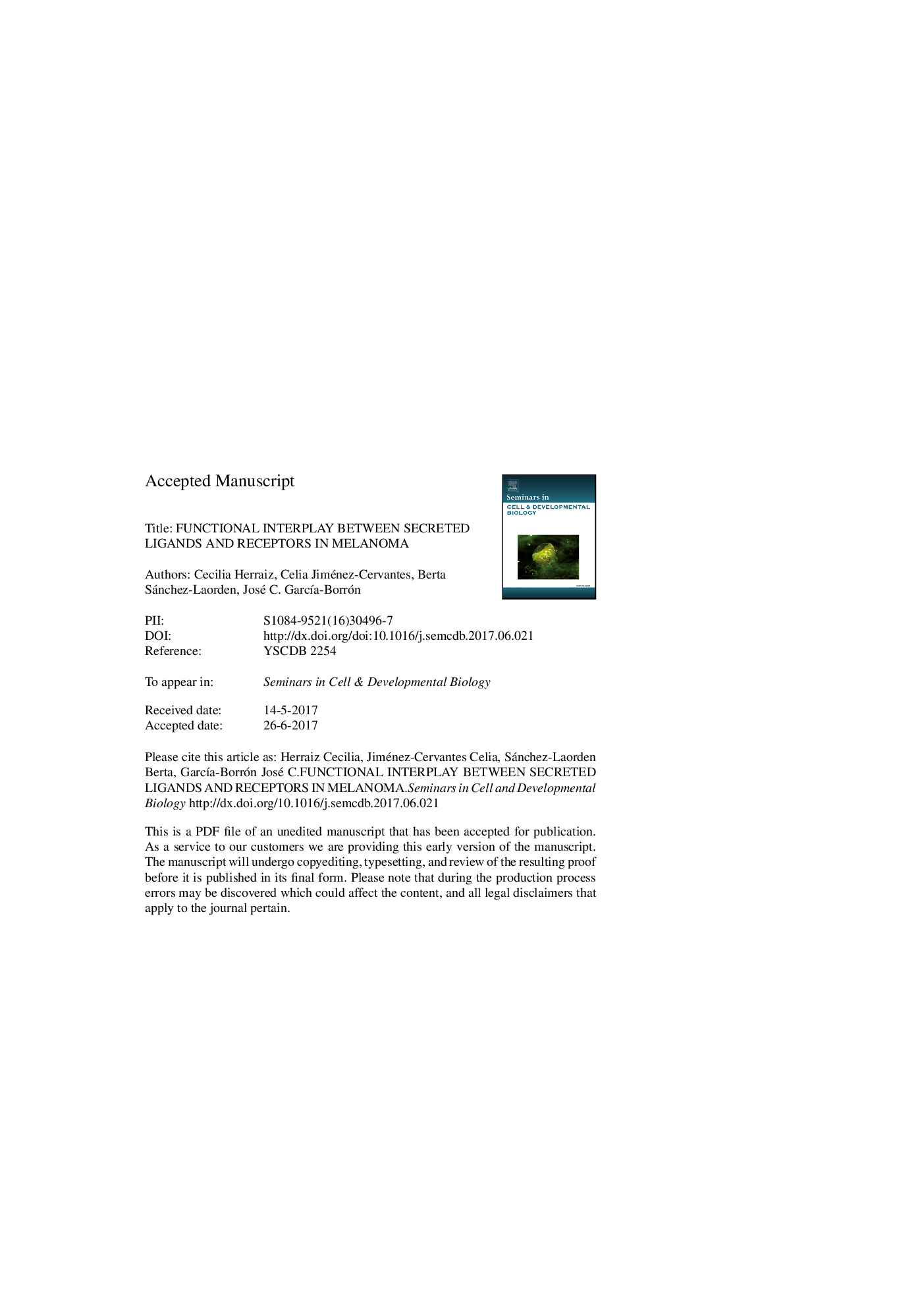| کد مقاله | کد نشریه | سال انتشار | مقاله انگلیسی | نسخه تمام متن |
|---|---|---|---|---|
| 8479637 | 1551345 | 2018 | 32 صفحه PDF | دانلود رایگان |
عنوان انگلیسی مقاله ISI
Functional interplay between secreted ligands and receptors in melanoma
ترجمه فارسی عنوان
اثر متقابل عملکردی بین لیگاند های ترشح شده و گیرنده های ملانوم
دانلود مقاله + سفارش ترجمه
دانلود مقاله ISI انگلیسی
رایگان برای ایرانیان
کلمات کلیدی
NRGERKHuman β-defensin 3GPCRHBD3Mc1rNF1ASIPMCSCMITFRTKBMDCKITLGMelanoma - خال سرطانی یا ملانوماMelanocyte stem cell - سلول بنیادی ملانوسیتMelanoma cell - سلول ملانومBone marrow-derived cell - سلول های مشتق شده از مغز استخوانMicrophthalmia transcription factor - عامل رونویسی میکرو فتالمیkit ligand - لیگاند کیتNeuregulin - نئورگولینNeurofibromin 1 - نوروفیبرومین 1Melanoma progression - پیشرفت ملانومextracellular signal-regulated kinase - کیناز تنظیم شده سیگنال خارج سلولیLymph node - گره های لنفاویReceptor Tyrosine Kinase - گیرنده تیروزین کینازMelanocortin 1 receptor - گیرنده ملانوکورتین 1melanocortin-1 receptor - گیرنده ملانوکورتین-1G protein-coupled receptor - گیرندههای جفتشونده با پروتئین جی
موضوعات مرتبط
علوم زیستی و بیوفناوری
بیوشیمی، ژنتیک و زیست شناسی مولکولی
بیولوژی سلول
چکیده انگلیسی
Melanoma, the most aggressive form of skin cancer, results from the malignant transformation of melanocytes located in the basement membrane separating the epidermal and dermal skin compartments. Cutaneous melanoma is often initiated by solar ultraviolet radiation (UVR)-induced mutations. Melanocytes intimately interact with keratinocytes, which provide growth factors and melanocortin peptides acting as paracrine regulators of proliferation and differentiation. Keratinocyte-derived melanocortins activate melanocortin-1 receptor (MC1R) to protect melanocytes from the carcinogenic effect of UVR. Accordingly, MC1R is a major determinant of susceptibility to melanoma. Despite extensive phenotypic heterogeneity and high mutation loads, the molecular basis of melanomagenesis and the molecules mediating the crosstalk between melanoma and stromal cells are relatively well understood. Mutations of intracellular effectors of receptor tyrosine kinase (RTK) signalling, notably NRAS and BRAF, are major driver events more frequent than mutations in RTKs. Nevertheless, melanomas often display aberrant signalling from RTKs such as KIT, ERRB1-4, FGFR, MET and PDGFR, which contribute to disease progression and resistance to targeted therapies. Progress has also been made to unravel the role of the tumour secretome in preparing the metastatic niche. However, key aspects of the melanoma-stroma interplay, such as the molecular determinants of dormancy, remain poorly understood.
ناشر
Database: Elsevier - ScienceDirect (ساینس دایرکت)
Journal: Seminars in Cell & Developmental Biology - Volume 78, June 2018, Pages 73-84
Journal: Seminars in Cell & Developmental Biology - Volume 78, June 2018, Pages 73-84
نویسندگان
Cecilia Herraiz, Celia Jiménez-Cervantes, Berta Sánchez-Laorden, José C. GarcÃa-Borrón,
